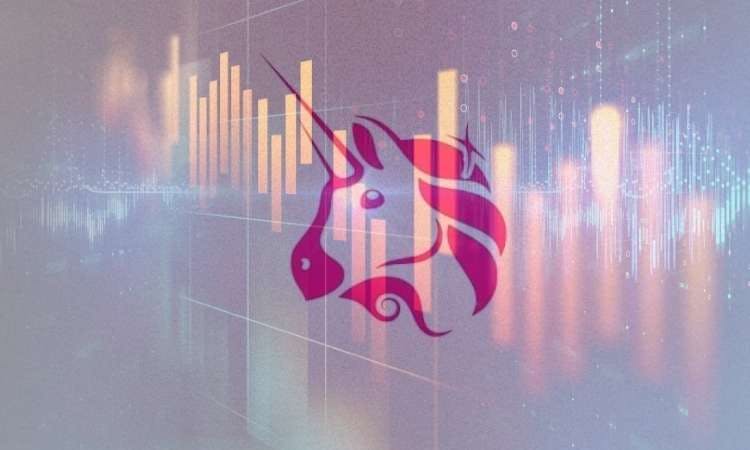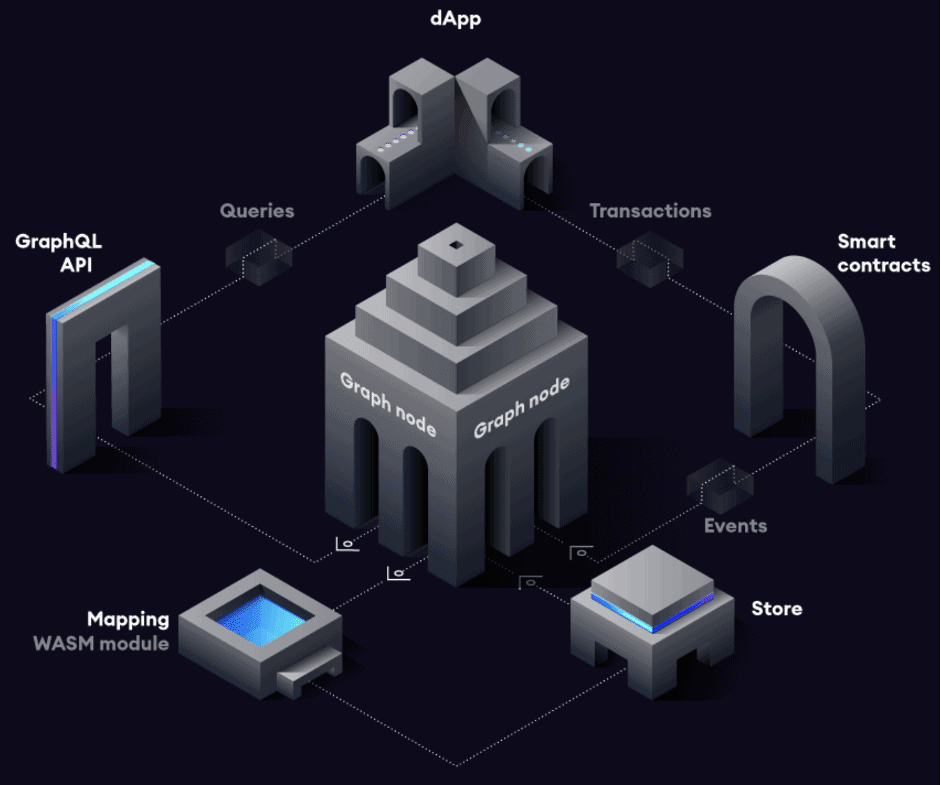
- All
- Tools
- Analytics
- Technical Analysis
- Trading
- Blockchain
- DeFi
- Guides
- Company News
- Educational
- Opinion
- Price Predictions
- Market News
- News
- Trading cases
- Practical guides
- Exchanges
- Trading signals
- Cryptocurrency
- Crypto bots
- Other
Become a crypto master
Learn everything about crypto,
trading and bots

Exploring the Thriving NFT Marketplace Development on Avalanche
Discover the potential of NFT Marketplace Development on Avalanche. Explore Avalanche's consensus algorithm and its impact on the blockchain ecosystem.
Start Trading on 3Commas Today
Get full access to all 3Commas trading tools with free trial period

Blockchain technology has transformed different industries by providing decentralized, secure, and transparent services. Avalanche has emerged as a notable player among the various blockchain platforms, delivering new features and capabilities that address some of the key challenges that standard blockchains encounter.
Emin Gün Sirer founded Avalanche, a decentralized platform that promises to provide high-performance solutions for the crypto ecosystem. It distinguishes itself with a novel consensus method that stands out as a fundamental pillar of its success.
The Avalanche consensus algorithm combines novel concepts and principles to achieve rapid finality and resistance to attacks. These features make Avalanche suitable for several applications, including the rapidly growing NFT (non-fungible token) industry.
This article explores NFT marketplace development on Avalanche, including its suitability and impact on the NFT ecosystem. We will also explore the Avalanche consensus algorithm and its impact on the blockchain ecosystem.
NFT Marketplace Development on Avalanche
Non-fungible tokens (NFTs) have grown in popularity, changing the way we perceive and exchange digital assets. NFTs are unique tokens that represent ownership or authenticity of a certain digital property, such as artwork, collectibles, virtual real estate, and so on.
As the need for NFTs grows, blockchain platforms like Avalanche have emerged as a suitable ecosystem for developing NFT marketplaces.
Unlike fungible and interchangeable cryptocurrencies like Bitcoin or Ethereum, NFTs provide distinct ownership rights to individual digital assets. This distinctiveness has piqued the interest of artists, designers, collectors, and enthusiasts.
Why is Avalanche Suitable for NFT Marketplace Development?
Avalanche's powerful blockchain technology makes it a perfect platform for the development of NFT marketplaces. Avalanche is particularly well-suited for the emerging NFT environment due to the following features:
Scalability
Scalability has been a major challenge for blockchain networks, especially when dealing with the needs of NFT transactions. Avalanche's novel architecture addresses this issue by adopting the Avalanche consensus protocol, which is a directed acyclic graph (DAG) structure.
This structure allows Avalanche to perform thousands of transactions per second. Avalanche's scalability offers smooth and efficient NFT marketplace operations, even during peak activity.
Low transaction fees and fast confirmation times
NFT marketplaces usually involve buying, selling, and bidding, thereby requiring speedy transaction confirmation and low fees. Avalanche excels in both of these areas, providing consumers with minimal transaction costs and quick finality.
Users can engage in NFT trading without suffering excessive wait times because of sub-second transaction confirmations. This efficiency enhances the user experience and encourages active involvement in the NFT marketplace.
Interoperability with other blockchain networks
Interoperability is important in the decentralized ecosystem since it allows NFTs to communicate with several blockchains and reach a larger audience. The interoperability of Avalanche with Ethereum's Virtual Machine (EVM) provides smooth bridging between the two networks, allowing users to access NFTs from both.
This interoperability opens the door to new cross-chain NFT partnerships, improved liquidity, and a larger market for NFT makers and collectors.
Top NFT Marketplaces on Avalanche
Several notable NFT marketplaces have emerged, leveraging Avalanche’s high-performance features and low transaction fees. These marketplaces provide a diverse selection of NFTs. Here are some of the top NFT marketplaces on Avalanche:
Art Blocks
Art Blocks is a cutting-edge and popular NFT marketplace on the Avalanche platform. The marketplace is known for its generative art projects and offers a unique experience for artists and collectors.
Artists on Art Blocks use smart contracts to create algorithmically generated artwork, resulting in a virtually unlimited number of permutations and combinations. These algorithmic works are minted as individual NFTs on the Avalanche blockchain, ensuring each artwork's legitimacy and exclusivity.
Also, Art Blocks provide different forms of generative art projects, each with its style and qualities. These NFTs catch the attention of collectors who value the uniqueness of algorithmic art, ranging from exquisite visual patterns to dynamic animations.
The Avalanche blockchain's scalability allows Art Blocks to manage a high rate of transactions, ensuring flawless minting and trading of these generative NFTs.
Dego Finance
Dego Finance is an Avalanche ecosystem of DeFi (decentralized finance) and NFT projects. It provides a platform for users to participate in different DeFi services while earning and trading NFTs. The marketplace combines the advantages of DeFi and NFTs, resulting in a dynamic ecosystem where users can explore both sectors.
Users can participate in NFT mining within the Dego Finance ecosystem by completing particular tasks or contributing to the platform's development in exchange for unique NFTs. These NFTs can be traded on the Dego Finance marketplace, allowing users to profit from their efforts or explore the tokens' collectible nature.
Dego Finance also provides yield farming options, allowing customers to lock in their assets and earn more tokens or NFT prizes.
Pangolin
Pangolin is an Avalanche-based decentralized exchange (DEX) and NFT marketplace. As a DEX, the platform offers customers a safe and efficient platform for trading multiple cryptocurrencies and tokens.
Pangolin, in addition to trading, allows NFT trading and minting, thereby allowing users to quickly access and engage with the NFT market on Avalanche.
Pangolin's NFT marketplace features different digital assets such as digital art, virtual land, gaming materials, and more. Artists and innovators can mint NFTs directly on Pangolin, accessing a global collector audience.
Pangolin provides a seamless experience for both artists and collectors, facilitating the discovery, trading, and ownership of unique digital items with its intuitive user interface and interaction with the Avalanche blockchain.
Snowflake
Snowflake is a unique Avalanche NFT marketplace dedicated to promoting disadvantaged artists and producers. The platform's goal is to give artists from various backgrounds a place to showcase their work and interact with a supportive community.
The marketplace values inclusivity and wants to promote the voices and creativity of artists who have traditionally been underrepresented in the art world.
Snowflake allows artists to mint and sell NFTs, allowing them to monetize their work and reach a larger audience. The platform also supports community collaboration and education, establishing a supportive environment in which artists may learn from and inspire one another.
Impact of Avalanche on the NFT Ecosystem
The existence of Avalanche in the NFT ecosystem has had a significant impact on artists, creators, and collectors, encouraging growth, accessibility, and diversity.
Attracting artists and creators to Avalanche
The scalability and low transaction fees of Avalanche make it an ideal solution for artists and creators interested in promoting and selling their work. Avalanche offers an efficient and cost-effective platform that attracts skilled individuals looking for NFT marketplaces that connect with their artistic vision.
The unique features of the platform allow artists to focus on their craft while reaching a larger audience and boosting their revenue.
Increased accessibility and inclusivity in the NFT space
The user-friendly interface of Avalanche, as well as its low transaction costs, contribute to a more inclusive NFT ecosystem. The lower cost of minting, purchasing, and trading NFTs eliminates financial obstacles for both creators and collectors.
This accessibility allows a broader spectrum of people to participate in the NFT marketplace, fostering diversity and democratizing access to digital assets. Avalanche's dedication to inclusiveness goes beyond cost, with projects aimed at strengthening disadvantaged artists and communities.
Avalanche Consensus
Consensus algorithms are important for establishing agreement and security in decentralized blockchain networks. They allow participants, known as validators or nodes, to reach an agreement on the state of the blockchain and validate transactions.
Also, consensus techniques build trust and prevent double-spending and bad behavior by reaching an agreement. The choice of consensus algorithm has a significant impact on the scalability, security, and transaction throughput of a blockchain.
Traditional consensus algorithms, such as Proof of Work (PoW) and Proof of Stake (PoS), have flaws. PoW consumes tremendous amounts of energy, but PoS may be vulnerable to centralization issues. As a result of these issues, Avalanche consensus was created to provide a fast, scalable, and secure consensus algorithm for blockchain networks.
Key Principles of Avalanche Consensus
Avalanche consensus is an innovative method for reaching consensus in blockchain networks. It introduces several essential principles that set it apart from traditional consensus techniques. These concepts help Avalanche achieve fast, scalable, and secure consensus. Here are the key principles of Avalanche consensus:
Metastability
Avalanche consensus is based on the principle of metastability. It refers to the idea that the network can reach a consensus on a certain transaction or block even when nodes have differing perspectives.
In other words, Avalanche allows numerous opposing viewpoints to coexist until one viewpoint wins a significant majority, resulting in a final consensus judgment. This method prevents the network from becoming trapped in indecision, allowing for quick agreement on transactions.
Randomized Sampling
Avalanche consensus uses randomized sampling to select the group of validators who will make consensus choices. Avalanche uses a probabilistic technique to randomly sample a subset of validators for each consensus round, rather than relying on a fixed number of validators or stake-based selection.
This randomization improves security by preventing targeted assaults and tampering with the consensus process.
Observer nodes
Avalanche introduced the concept of observer nodes as an additional layer of security and scalability. Observer nodes are low-level actors in the consensus process that observe network activity and aid in the propagation of transactions and blocks.
While they do not directly participate in consensus decision-making, observer nodes contribute to the network's general efficiency and resilience by assisting in network propagation and reducing validators' workload.
Binary consensus decisions
Consensus decisions in Avalanche are binary, which means nodes only need to select between two options: "yes" or "no." This simplification of decision-making allows for rapid convergence toward consensus while also reducing the complexity of the consensus algorithm.
Avalanche offers fast finality and assures that transactions are confirmed swiftly by focusing on binary choices, which is important for NFT marketplaces and other applications that require near-instant settlement.
Optimal fault tolerance
The goal of avalanche consensus is to achieve optimal fault tolerance in the context of Byzantine faults, where nodes can behave erratically and maliciously. It assures that even if a piece of the network is compromised or malfunctioning, the remaining honest nodes may reach a proper consensus.
This fault tolerance attribute improves the Avalanche network's security and reliability by making it more resistant to attacks and ensuring transaction integrity.
How Avalanche Consensus Works
Avalanche consensus is achieved in three steps: propose, vote, and confirm.
- Avalanche network nodes propose transactions and candidate blocks. These proposals are circulated throughout the network for voting.
- The network's validators vote independently on the validity and sequencing of proposed transactions. They accomplish this by polling a subset of other validators and soliciting their feedback.
- The network achieves consensus when a certain number of validators confirm a specific candidate block. The confirmed block is subsequently appended to the blockchain, and the transactions contained inside it are considered complete.
Source: Medium
Advantages of Avalanche Consensus
Fast finality and transaction confirmation
Avalanche consensus provides quick finality, which means that once an agreement is reached, the confirmed transactions are considered settled. This capability is especially useful for time-sensitive applications such as NFT marketplaces, where timely transaction confirmation is critical to providing a flawless user experience.
Resistance to Sybil attacks and network congestion
Avalanche consensus is resistant to Sybil attacks (attacks where malicious actors attempt to manipulate the network by assuming several identities). Avalanche's consensus process assures that any validator's influence is proportional to its stake, making it difficult for attackers to disrupt the network.
Furthermore, Avalanche's consensus method prevents congestion by dynamically modifying its parameters, ensuring smooth network performance even amid high transaction loads.
Flexibility and ability to adapt to network conditions
The avalanche consensus is adaptable and versatile. It can adapt its consensus settings to changing network conditions, maximizing its performance based on network latency, available resources, and transaction demand. The network can maintain efficiency and stability in the face of changing network conditions because of its adaptability.
Conclusion
Avalanche is a promising blockchain platform with important implications for the development of NFT marketplaces and consensus mechanisms. It has become a significant blockchain innovation due to the rapid expansion of NFTs and the necessity for scalable, low-cost solutions.
Avalanche is poised for more advancements and developments in the future. The platform has the potential to offer new features and upgrades to its protocol as the blockchain ecosystem evolves, thereby boosting scalability, interoperability, and the user experience.
Collaborations and partnerships with artists, developers, and businesses could help expand the Avalanche ecosystem by encouraging innovation and promoting mainstream adoption.
FAQ
There are various steps to creating an NFT marketplace on Avalanche. Start by defining your marketplace concept, including your target demographic and unique selling proposition. Learn about the Avalanche ecosystem and how it interacts with other blockchains.
Design a user-friendly interface and smart contracts that manage the functionality of your marketplace. Implement critical features like search, auctions, and social interactions while putting security first. Finally, install and market your marketplace, maintaining and updating it regularly to improve the user experience.
Yes, Avalanche supports NFTs. It is a popular blockchain for NFTs because of its low costs, great speed, scalability, and security. It provides low-cost transactions for minting and trading NFTs. It meets the needs of time-sensitive applications such as NFT trading due to its fast transaction processing.
The scalability of Avalanche ensures that it can meet the growing needs of the NFT market. Furthermore, its strong security features make it a safe platform to store sensitive NFT assets.
The Avalanche blockchain platform created a unique consensus algorithm called Avalanche consensus. The consensus follows a 3-step process; propose, vote, and confirm. To achieve fast, safe, and scalable agreement among network nodes, the technique uses a metastable mechanism and randomized sampling.
Avalanche consensus has advantages such as quick finality and transaction confirmation, resistance to Sybil attacks, and adaptability to network conditions. It is a unique method for achieving consensus in blockchain networks, delivering decentralized applications with speed, security, and adaptability.

Adedamola is a highly resourceful content writer with comprehensive experience in researching and creating simple content that engage and educate the audience. He is interested in improving the marketing results of blockchain and crypto brands through great content.





